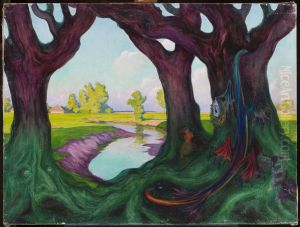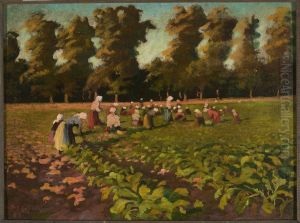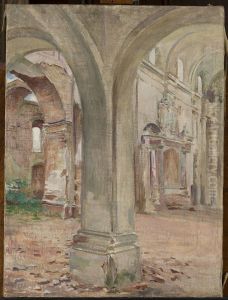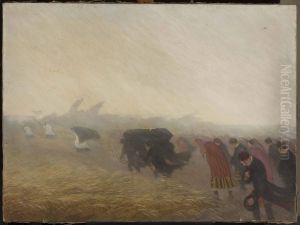Franciszek Lubienski Paintings
Franciszek Lubienski was a Polish artist, known for his significant contributions to painting and sculpture. Born in 1890 in Poland, Lubienski lived through a period of profound change, witnessing the impacts of both World Wars on Europe and the art world. Despite the turbulent times, or perhaps because of them, his work displayed a remarkable versatility and depth, exploring themes of human emotion, nature, and the existential dilemmas of his era.
Lubienski's early education in the arts was grounded in traditional techniques, but he quickly evolved to embrace more modernist approaches, experimenting with form, color, and composition in innovative ways. His artistic journey was influenced by the broader movements of his time, including expressionism and surrealism, yet his style remained distinct, characterized by a personal language of symbols and a masterful manipulation of textures and light.
Throughout his career, Lubienski was an active participant in the Polish art scene, contributing to exhibitions and engaging in artistic debates that shaped the direction of contemporary art in Poland. Despite the challenges posed by the political climate, particularly during the Second World War and the subsequent Soviet influence in Eastern Europe, he continued to produce work that was both introspective and critical of the societal shifts occurring around him.
After the war, Lubienski's work began to gain international recognition, with exhibitions in Western Europe and beyond. His paintings and sculptures, often reflective of his philosophical inquiries into the human condition and the natural world, resonated with a wide audience. Lubienski's legacy is not only in the artworks he left behind but also in his influence on subsequent generations of artists, both in Poland and internationally.
Franciszek Lubienski passed away in 1970, leaving behind a rich body of work that continues to be studied and admired for its emotional depth and aesthetic innovation. His contributions to the art world are commemorated in various collections and museums, ensuring his place in the annals of art history as a significant figure in the development of modern Polish art.



